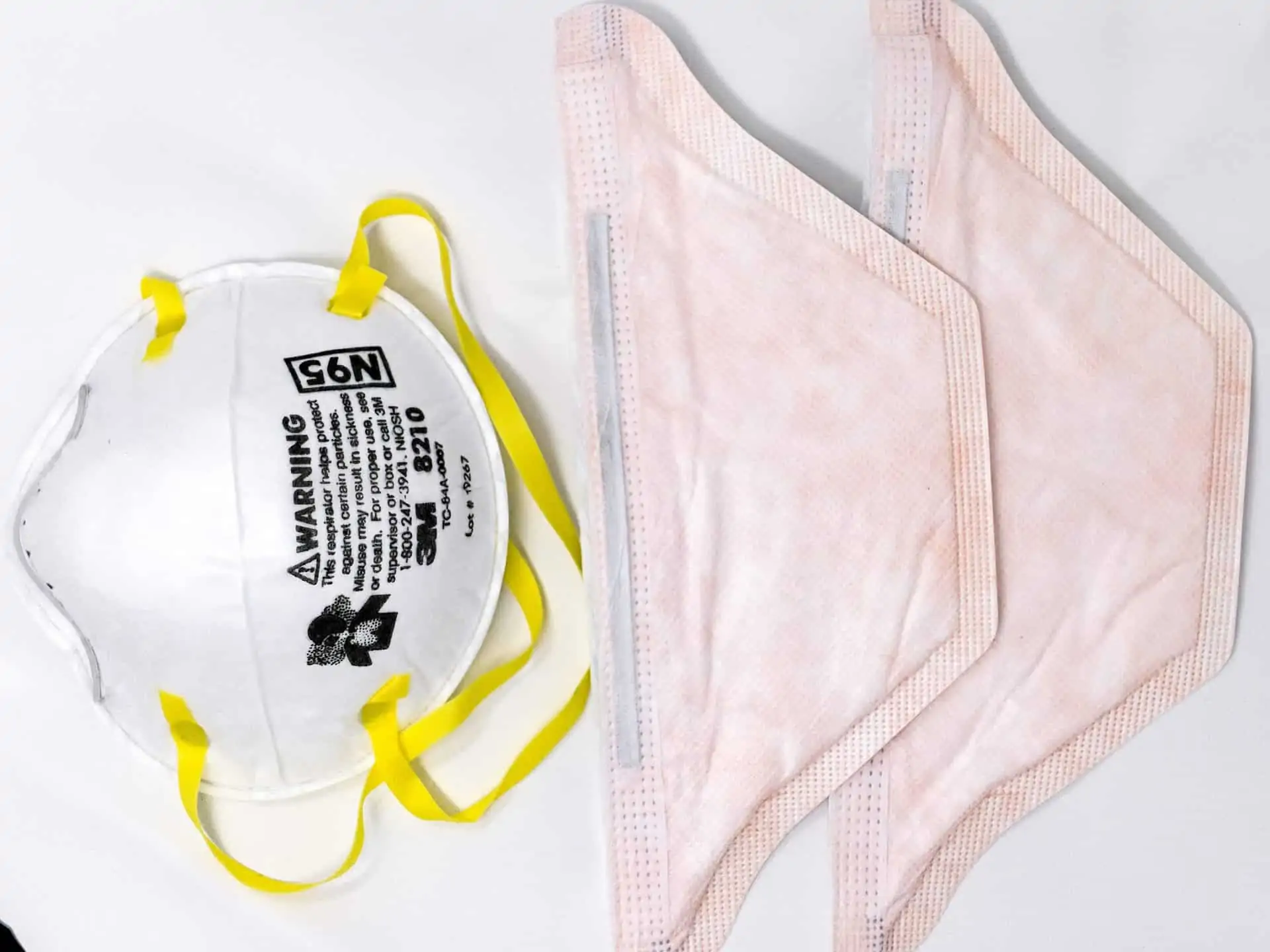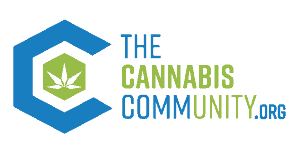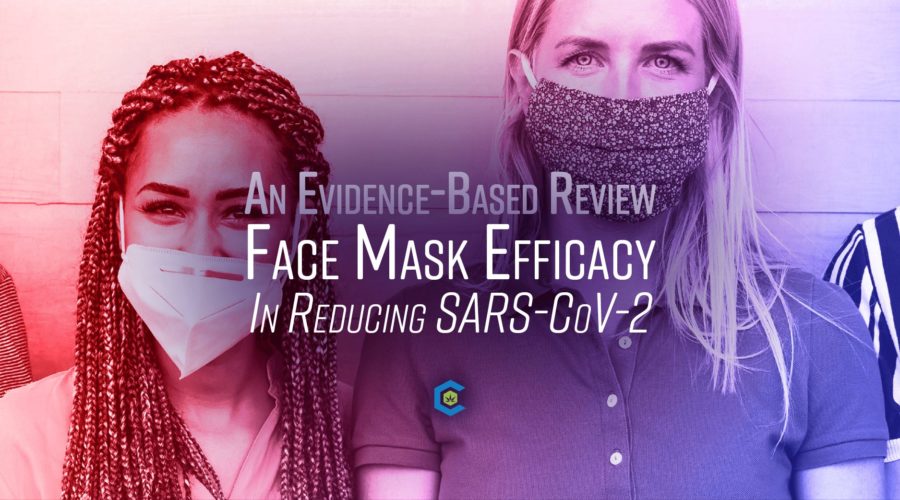Face Mask Efficacy In Reducing SARS-CoV-2 & Other Respiratory Virus Transmission: An Evidence-Based Review
What is the Novel Coronavirus 2019 (CoVID-19)?
The novel coronavirus 2019 (2019-nCoV), now referred to as SARS-CoV-2, gets its name from its “crown” like shape under a microscope (corona is Latin for “crown”). It is considered a zoonotic infection that has adapted to humans, and while its exact origin is unknown, bats have been implicated as the original source.1 These types of viruses commonly infect birds and mammals, causing respiratory infections. The World Health Organization has labeled this disease as the 2019 novel coronavirus disease (COVID-19) and the virus identified for causing it as severe acute respiratory syndrome coronavirus-2 (SARS-CoV-2).2 But in terms of face mask efficacy, how effective are they?
There are many questions and conspiracies afloat about this pandemic and the guidelines offered by health experts to prevent its transmission. In particular, the efficacy of various masks has been questioned in preventing the spread of this illness and other respiratory infections that can be spread through droplets in the air such as the cold and the flu. A better general understanding of the mechanisms by which this virus and similar viruses are spread will better assist in comprehending this means of protection.
How Do the SARS-CoV-2 Virus & Other Respiratory Viruses Spread?
According to a recent scientific study, “respiratory infections occur through the transmission of virus-containing droplets (>5 to 10 μm) and aerosols (≤5 μm) exhaled from infected individuals during breathing, speaking, coughing, and sneezing.”1
The study continues to explain how traditional measures of reducing transmission are to reduce the diffusion of these droplets from person to person. What makes COVID-19 unique is that “a large proportion of the spread of coronavirus disease 2019 (COVID-19) appears to be occurring through airborne transmission of aerosols produced by asymptomatic individuals during breathing and speaking.”3–5 To make matters worse, such aerosols have been shown to accumulate and remain infectious in indoor air for hours, and can be “easily inhaled deep into the lungs.”1
Direct contact with infected persons and surfaces, as well as airborne transmission, have been established as the two major mechanisms through which SARS-CoV-2 spreads. Face masks/facial protection have been established to reduce airborne transmission and asymptomatic spread of these virulent aerosols and droplets (the difference between the two is subtle and still debated). In order for society to successfully resume, policies must be enacted to reduce transmission of these aerosols, including universal mask wearing and widespread testing.
Understanding SARS-CoV-2 Pathology
What this essentially means is that the virus-containing droplets expelled from an infected individual are really, really tiny, and are easily breathed deep into the alveolar region of the lungs, where the immune system is briefly bypassed. Once inside, the virus is shown to replicate three times faster than the earlier SARS-CoV-1 virus and shed before the innate immune response even has a chance to become activated and produce the onset of symptoms! This is the insidious mechanism by which it can be spread so easily through respiratory droplets and aerosols from asymptomatic individuals. Indeed, this is exactly the reason facemasks and facial protection are so necessary to prevent the spread and contraction of the SARS-CoV-2 virus.
Face Mask Efficacy in General With Reducing SARS-CoV-2 Transmission?
The efficacy of facemasks can be explained by each mask’s ability to prevent transmission of tiny virus-containing respiratory droplets and aerosols from infected persons. Just how efficacious facial protection is in general in preventing the spread of SARS-CoV-2 has been clearly established. In general, the results from clinical trials investigating this question show mask use results in “protection for healthcare workers and community members…”7 As such, they’ve currently been deemed as a necessary and effective measure to protect individuals from contracting this virus.
While the size of the virus SARS-CoV-2 itself may be too small for a mask to contain, transmission of the respiratory droplets and aerosols that contain the virus can be reduced by facial protection and universal face mask use. The diagram below explains this concept of aerosol and respiratory droplet size and how that relates to reduced transmission by wearing a face mask.
Cloth & Surgical Masks vs. N-95 Masks
The most commonly known masks are the DIY cloth facemask, surgical mask, and the medical grade N-95 mask. Since N-95 masks are actually a type of respirator that gets its name from being able to filter out 95% of very small particles, it is certainly magnitudes more effective than any other mask at protecting the wearer from contracting the virus and potentially spreading it.

But that doesn’t mean the combination of using cloth face masks when in public, frequent hand washing and social distancing isn’t an effective tool at reducing SARS-CoV-2 transmission from asymptomatic people in your community. (A note: you should absolutely stay home if you have cold/flu-like symptoms, unless they become severe enough to warrant a trip to the hospital).
Referencing the diagram above, we see that the size of the expelled respiratory droplets is likely the determining factor of how far it will travel. However, since the virus is thought to be contained within these aerosolized droplets, wearing a cloth mask in conjunction with social distancing and conscious hygiene will certainly prevent a considerable portion of these particles, especially larger ones (100 micron), from spreading to healthy people from potentially asymptomatic ones.
A Note About Bad COVID Science
An enormous amount of clinical, peer-reviewed research has suddenly surfaced regarding COVID-19 and the SARS-CoV-2 virus that causes it. Well over 100 peer-reviewed papers in a very short time (e.g. it took my paper on second-time lung re-transplantation over a year and a half of revisions before it was finally accepted for publication at the Journal of Heart and Lung Transplantation). Unfortunately, not all of these studies are very credible and some are downright awful.
One study attempting to discredit mask efficacy published in the April 2020 edition of the Annals of Internal Medicine ended up being retracted because it was performed so poorly and with such a small sample size that its results weren’t reliable.8 Closer investigation of the actual study indicates they didn’t have subjects change rooms or decontaminate between “cough trials,” wherein patients cough into a petri dish only 20cm away. This means they did not test mask efficacy at farther distances compared to that of someone wearing no mask, and they didn’t conduct these trials in separate rooms.
Furthermore, the first trial is an “unmasked cough,” meaning viral particles can easily remain in the air and cause cross contamination. Furthermore, they utilized an incredibly small sample size of only 4 patients, a size far too small to extrapolate in any meaningful way.
Better Research Credibly Demonstrates Facemask Efficacy
More recent research published in Nature, the most prestigious journal in science, performed a much more rigorous study into the ability of facemasks in preventing the spread of COVID-19. Researchers asked “246 volunteers to breathe for 30 minutes into a cone-like device that captures everything exhaled. Of these, 43 patients had influenza, 54 patients had rhinoviruses and 17 patients had seasonal coronaviruses (the kinds that cause colds, not the kind that causes COVID-19).”9
In general, well conducted and scientifically rigorous research is greatly supportive of face mask use. Until greater, preventative measures become available, masks will continue to mitigate the spread of COVID-19 and other respiratory borne illnesses to communities and individuals around the globe.
Works Cited
1. Prather, K. A., Wang, C. C. & Schooley, R. T. Reducing transmission of SARS-CoV-2. Science (2020) doi:10.1126/science.abc6197.
2. Naming the coronavirus disease (COVID-19) and the virus that causes it. https://www.who.int/emergencies/diseases/novel-coronavirus-2019/technical-guidance/naming-the-coronavirus-disease-(covid-2019)-and-the-virus-that-causes-it.
3. Morawska, L. & Cao, J. Airborne transmission of SARS-CoV-2: The world should face the reality. Environ. Int. 139, 105730 (2020).
4. Anderson, E. L., Turnham, P., Griffin, J. R. & Clarke, C. C. Consideration of the Aerosol Transmission for COVID-19 and Public Health. Risk Anal. Off. Publ. Soc. Risk Anal. 40, 902–907 (2020).
5. Full article: The coronavirus pandemic and aerosols: Does COVID-19 transmit via expiratory particles? https://www.tandfonline.com/doi/full/10.1080/02786826.2020.1749229.
6. Chu, H. et al. Comparative replication and immune activation profiles of SARS-CoV-2 and SARS-CoV in human lungs: an ex vivo study with implications for the pathogenesis of COVID-19. Clin. Infect. Dis. Off. Publ. Infect. Dis. Soc. Am. (2020) doi:10.1093/cid/ciaa410.
7. MacIntyre, C. R. & Chughtai, A. A. A RAPID SYSTEMATIC REVIEW OF THE EFFICACY OF FACE MASKS AND RESPIRATORS AGAINST CORONAVIRUSES AND OTHER RESPIRATORY TRANSMISSIBLE VIRUSES FOR THE COMMUNITY, HEALTHCARE WORKERS AND SICK PATIENTS. Int. J. Nurs. Stud. (2020) doi:10.1016/j.ijnurstu.2020.103629.
8. Bae, S. et al. Effectiveness of Surgical and Cotton Masks in Blocking SARS–CoV-2: A Controlled Comparison in 4 Patients. Ann. Intern. Med. (2020) doi:10.7326/M20-1342.
9. Leung, N.H.L., Chu, D.K.W., Shiu, E.Y.C. et al. Respiratory virus shedding in exhaled breath and efficacy of face masks. Nat Med 26, 676–680 (2020). https://doi.org/10.1038/s41591-020-0843-2

